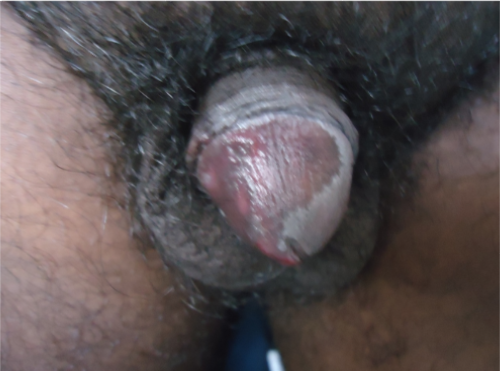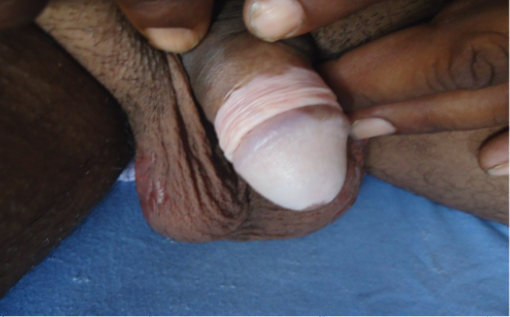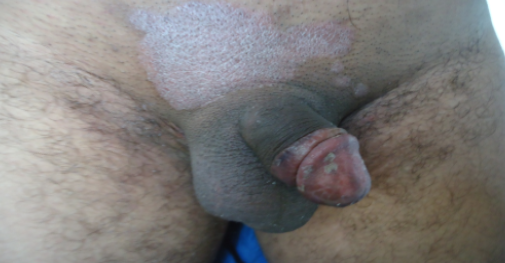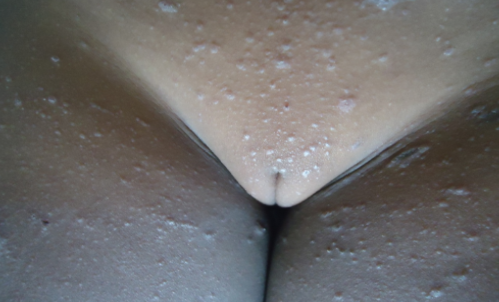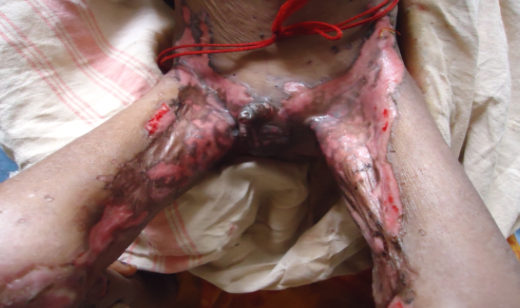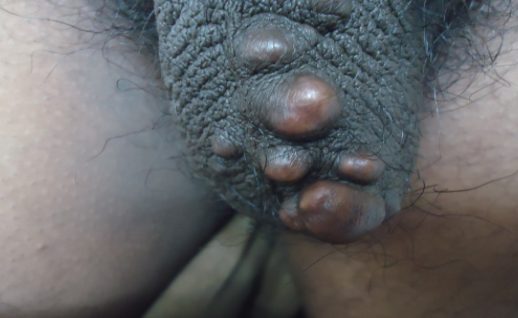Introduction
Non-venereal dermatoses tend to be confused with venereal diseases, which may be responsible for considerable concern to patients as well as causing diagnostic dilemma to the physicians. The study was to find the pattern of non-venereal dermatoses presenting with genital lesions and to co-relate with various clinical parameters. Contrary to popular belief, all lesions on the genitalia are not manifestations of sexually transmitted diseases. These non-venereal disorders are a cause of considerable concern to patients causing mental distress and guilt feelings in patients, who are convinced that they have developed a sexually transmitted disease.
Non-venereal dermatoses are often diagnostic dilemma to the treating physician, who has to effectively manage the condition and also allay the associated anxiety. A comprehensive understanding of the various presentations, their causes and appropriate management options is therefore essential. Determining any causal or aggravating factor can save the patient from the agony of persistent discomfort and restricted social life thereby considerably improving the dermatology specific quality of life.
Non-venereal dermatoses need not be restricted to the genitalia alone. It may affect other mucous membranes and also the skin elsewhere. Hence there was a need to undertake this study to determine clinical and epidemiological pattern of non-venereal genital conditions.
Materials and Methods
It was a descriptive study with source of data being OPD and in-patients registered in dermatology department of VIMS medical college and hospital, Ballari in the period of 18 months from January 2015 to June 2016.
Evaluation
For the study detailed history including the age, occupation, duration of the disease and the site of affection and history of exposure was taken. Physical examination was done to see any associated lesions elsewhere in the body. Investigations like KOH mount, Gram’s stain biopsy, histopathological examination was done wherever it is required to establish the diagnosis. The patients satisfying the inclusion and exclusion criterion as mentioned were taken for the study after an informed written consent. The studt included 120 patients of both sexes presenting with genital lesions, genital with skin lesions of non venereal conditions. Data was collected from the selected subjects by recording relevant patient details and a thorough general, systemic and dermatological examination. A proforma was prepared to record the relevant details of the patient, examination, investigation, results and the diagnosis. Disease wise comparison was done for both sexes. The data was finally tabulated and analysed.
Microsoft word and Excel have been used to generate tables and graphs.
Discussion
Non-venereal genital disorders include a wide array of diseases with varied etiology. Not many comprehensive studies exist with regard to the prevalence and pattern of these diseases. Acharya et al had done a study of 200 patients with genital lesions of non-venereal origin.1 Karthikeyan et al did a study on the pattern of non-venereal dermatosis of male external genitalia from South India.2 Talamala et al had done a similar study on male patients at a tertiary care centre.3
Prevalence
The prevalence of non-venereal genital lesions during the period was found to be 21.76 per 10,000 patients attending Dermatology department, the prevalence among men was 19.77 per 10,000 patients and a study done by Karthikeyan et al showed overall prevalence of non-venereal dermatoses among the male patients was 14.1 per 10,000.2 The difference in the male prevalence in both studies could be due to the difference in sampling technique. We included both male and female patients and conditions like malignancies and congenital abnormalities in addition to infectious and inflammatory conditions, while Karthikeyan et al included only male patients and excluded conditions like malignancies and congenital abnormalities. 2
Age and sex distribution
In our study, age ranged from 2 months to 65 years, where as the age range was from 1 month to 80 years in the study population by Acharya et al,1 which is comparable to our study. Mean age was 32.94 years in our study, whereas mean age was 32.2 years in a study by Saraswat et al4 and 33.7 years in a study by Karthikeyan et al2 respectively which is comparable to present study. Most patients belonged to the age group of 21-30 years(25%) followed by 31-40 years (21.7%) in the present study which is comparable to a study Karthikeyan et al 2 and Saraswat et al4 respectively.
In our study, males predominated with male to female ratio of 9.9:1; in contrast to Acharya et al with a M:F ratio of 1.8:1. 1 Lack of easy access to the health care center and shyness in females may be factors responsible for this difference.
Residential profile
In our study patients from urban area were 59.2% and rural area 40.8% respectively whereas 64% from urban area and 36% from rural area in a study by Talamala et al 3 and urban predominance(74% urban area and 26% rural area) also seen in a study by Saraswat et al 4 which is similar to our study. Increased health awareness among the urban population may be the possible reason.
Marital status
Married were 66.7% and unmarried were 33.3% in a present study, which is similar to Talamala et al 3 showing 67% married and 33% unmarried population. Among unmarried populations 20 children were found in our study.
Commonest non-venereal dermatoses
In our study, a total of 24 different non-venereal dermatoses were observed, similar to study done by Karthikeyan et al2 and Singh et al5 showing 25 and 19 different non venereal genital dermatoses respectively.
In our study, non-venereal dermatoses were categorized based on distribution of lesions into only genital lesions in 54 patients(45%), Both genitalia and skin involvement in 50 patients (41.67%) and orogenital lesions in 16 patients (13.33%) respectively, in addition to etiological classifications.
Fixed drug eruptions (FDE) and Drug reactions
In our study, 35(29.16%) cases of Fixed drug eruptions were encountered, which is comparable with the study done by Kanodia et al 6 showing 38 cases of genital Fixed drug eruptions .
Fixed drug eruption presenting predominantly as orogenital lesions in 15(12.5%) cases followed by only genital lesions in 9(7.5%), Genital and skin involvement in 9(7.5%) cases and concurrent orogenital and skin involvement in 2(1.67%) cases.
Most of the FDEs were caused by oral Fluroquinolones like ciprofloxacin, norfloxacin, levofloxacin and ofloxacin followed by injectable and oral non steroidal anti-inflammatory drugs like diclofenace, Ibuprofen and piroxicam. Duration of symptoms varied from 6 hours to 10 days one case each of Steven Johnson syndrome involving orogenital and skin lesions due to ofloxacin drug intake and DRESS(Drug rash eosinophilia and systemic symptoms) with genital and skin involvement due to carbamazepine drug intake was found in our study, accounting for 30.83% of drug induced eruptions.
Vitiligo
Genital vitiligo was the second common non-venereal dermatoses observed in our study. It comprised of 29(24.16%) patients with 23(19.16%) male and 6(5%) female patients, which is comparable to a study done by Talamala et al showing 19% of cases,3 Saraswat et al had 18% of genital vitiligo cases4 and Karthikeyan et al had 16% of genital vitiligo patients respectively.2 Among vitiligo patients only genital involvement was seen in 18(15%) patients followed by concurrent orogenital and skin involvement was found in 7(5.84%) .Genital and skin involvement in 3(2.5%) and 1(0.83%) patient presented with orogenital involvement. One patient with genital vitiligo also had twenty nail dystrophy which on nail biopsy showed psoriasis, one adult male had psoriasis vulgaris with genital vitiligo and One male child presented with genital vitiligo and hypospadiasis. Three vitiligo patients also had diabetes mellitus in our study. It is known that vitiligo is associated with systemic disorders like Diabetes Mellitus, Autoimmune Thyroiditis, Pernicious Anemia. In our study 3(2.5%) vitiligo patients had Diabetes Mellitus. Out of which 2(1.67%) genital vitiligo patients and 1(0.83%) generalised vitiligo patient with genital involvement had type 2 Diabetes Mellitus. In a study by Arycan et al 7.1% of patients had vitiligo assosiation with Diabetes Mellitus.7
Other systemic conditions that can be associated are asthma, addisons disease, lymphoma, leukemia, autoimmune polyendocrinopathy, candidiasis, ectodermal dystrophy(APECED). We have not come across these conditions, may be because of smaller sample size. Vitiligo is also associated with cutaneous disorders like psoriasis, halo neavus, alopecia areata, lichen planus, idiopathic guttate hypomelanosis. While in our study, we had 1(0.83%) case of genital vitiligo associated with chronic plaque psoriasis and 1(0.83%) With nail psoriasis presented as twenty nail dystrophy, which is comparable to a study done by Arycan et al showing 0.9% of vitiligo association with psoriasis.7
Banerjee et al reported a case of condom leukoderma. 8 We in our study not come across any of such case.
Psoriasis
This was the third most common non-venereal genital dermatoses encountered in our study. It comprised of 13 (10.83%) patients. Out of which 12(10%) were male and 1(0.83%) female patient. In our study there were 9(7.5%) cases of chronic plaque psoriasis involving genitalia, 3(2.5%) cases of psoriatic erythroderma involving genitalia and 1(0.83%) case of sebopsoriasis involving genitalia. Out of 12(10%) male patients, 2(1.67%) circumcised males presented with itchy, silvery scaly plaques and 10(8.33%) uncircumcised males presented with nonscaly erythematous patches. One male child with sebopsoriasis presented with erythematous scaly plaques over the bilateral crural region and involvement of scrotum. We have not come across isolated genital psoriasis in our study, while in a study done by Meeuwis et al 9 have reported 2-5% of isolated genital psoriasis patients.7 Acharya et al 1 had 5 cases of genital psoriasis and Saraswat et al4 had 3 cases of genital psoriasis in their study, accounting for 2.5% and 3% of cases which is in contrast to our study showing 10.83% of genital psoriasis. This may be due to higher prevalence of psoriasis in our region.
Table 1
Patients who attended Skin OPD at VIMS from January 2015 to July 2016
|
Gender |
New Cases |
Old Cases |
Total |
Percentage |
|
Male |
20445 |
12696 |
33141 |
60.10% |
|
Female |
12996 |
9009 |
22005 |
39.90% |
|
Total |
33441 |
21705 |
55146 |
100.00% |
Table 2
Patients with Non venereal genitaldermatoses
|
Gender |
Number |
Percentage |
|
Male |
109 |
90.84% |
|
Female |
11 |
9.16% |
|
Total |
120 |
100% |
Table 3
Gender based prevalence
|
Gender |
Prevalence per 10000 patients |
|
Male |
19.7 |
|
Female |
1.99 |
|
Total |
21.7 |
After screening 55,146 patients, the prevalence of non-venereal genital dermatoses during the period was found to be 0.217 (Table 1, Table 2).
Table 4
Age distribution of patients with non-venereal genital dermatoses
|
Age group |
Male |
Female |
Total(%) |
|
0-10 |
6 |
8 |
14(11.7%) |
|
11-20 |
2 |
10 |
12(10%) |
|
21-30 |
0 |
30 |
30(25%) |
|
31-40 |
1 |
25 |
26(21.7%) |
|
41-50 |
0 |
19 |
19(15.8%) |
|
51-60 |
1 |
12 |
13(10.8%) |
|
61-70 |
1 |
5 |
6(5%) |
|
Total |
11 |
109 |
120(100%) |
The majority of the patients were in the age group of 21-30 years (25%) followed by 31 –40(21.7%). The Mean age of the patients was 32.9 years (range 2 months to 65 years).
Table 5
Sex distribution of patients with Non venereal genital dermatoses
|
Gender |
Number |
Percentage |
|
Male |
109 |
90.84% |
|
Female |
11 |
9.16% |
|
Total |
120 |
100% |
[i] Male(109) to female(11) ratio was 9.9:1(Table 5).
Table 6
Marital status of patients with non venereal genital dermatoses
|
|
Frequency |
Percent |
|---|---|---|
|
Married |
80 |
66.7 |
|
Unmarried |
40 |
33.3 |
|
Total |
120 |
100.0 |
Table 7
Residential profile of patients with non venereal genital dermatoses
|
Location |
Frequency |
Percent |
|
Rural |
71 |
59.2% |
|
Urban |
49 |
40.8% |
|
Total |
120 |
100.0% |
Table 8
Distribution based on site of lesions in both the sexes
|
Type of lesion |
Frequency |
Percentage |
|
Genital lesions only |
54 |
45% |
|
Both genitalia and Skin |
50 |
41.67% |
|
Orogenital lesions |
16 |
13.33% |
Table 9
Etiology of nonvenereal genital dermatoses based on etiology in both the sexes
In this study, a total of 24 different types of non-venereal genital diseases were found and among them majority were FDE/SJS/DRESS 37(30.83%) followed by vitiligo 29(24.16%), psoriasis 13(10.83%) and others. Less common conditions were phimosis 1(0.83%), vulval haemangioma 1(0.83%), bullous impetigo 1(0.83%), lepromatous leprosy 1(0.83%) and others.Table 9
Conclusion
Non venereal diseases are not uncommon. Conditions range from infectious to inflammatory disoreders. One should be aware of these conditions of the genitalia for differentiating them from venereal diseases and to make sure that all lesions over the genitalia are not sexually transmitted. A comprehensive understanding of the various presentations and their etiology is therefore essential. Fixed drug eruptions and vitiligo are commonly encountered as non venereal genital dermatoses.

